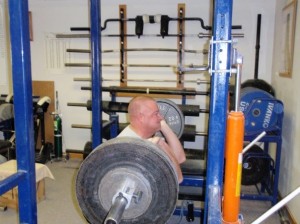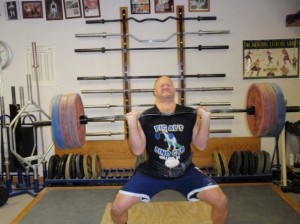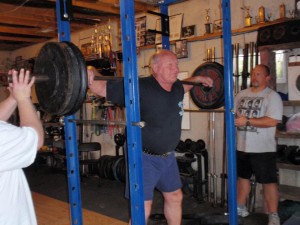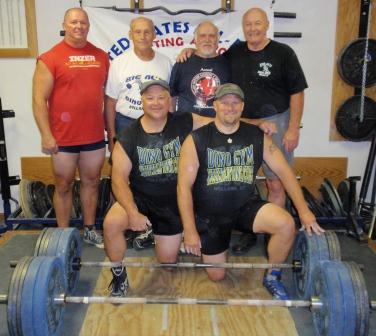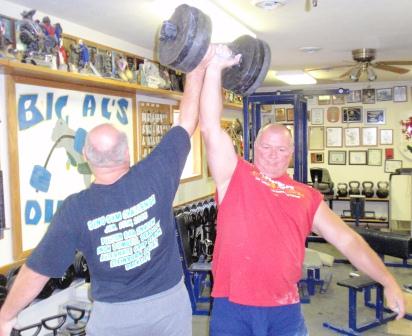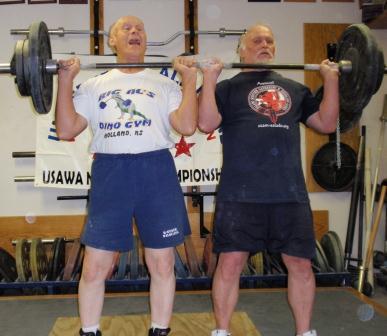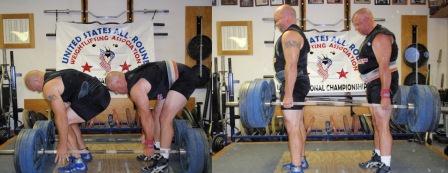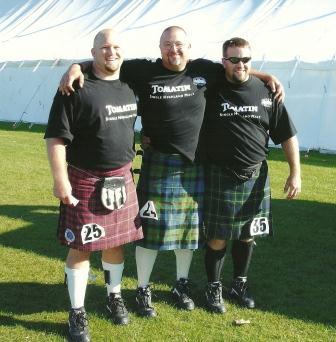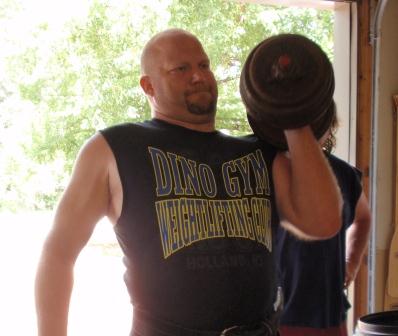Otto Ziegler, 1919 to 2011
by Al Myers
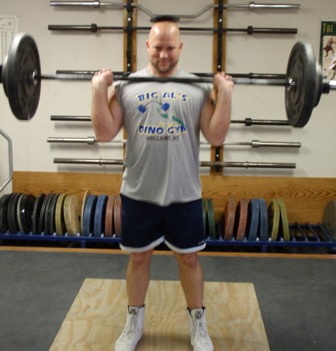
Chad Ullom did a 200 pound Ziegler Clean at the 2009 Dino Gym Challenge. This is the top mark of ALL-TIME in the USAWA Record List.
Recently Otto Ziegler of Baytown, Texas passed away. He was 92 years old when he died, but throughout his life made a huge impact on weightlifting and even All Round Weightlifting. Most of us know that he is responsible for his name being tied to a very unusual lift in the USAWA – the Ziegler Clean. But his contributions to Olympic Weightlifting go far beyond what he has done for the USAWA. In 2003 he was inducted into the Weightlifting Hall of Fame. He has coached hundreds of lifters throughout his life, served as a meet director numerous times, officiated Olympic Meets, conducting weightlifting clinics and seminars, along with a long career of lifting himself.
Bill Clark tried for years to get Otto involved in the USAWA, but to my knowledge he never competed in an USAWA event. However, he was a longtime subscriber to Bill’s Strength Journal and incorporated several of the all round lifts into his training. In an old Strength Journal, Bill highlighted some of Otto’s All-Round poundages (from the Strength Journal Vol.IV.No.5 – 1993).
- Bent Press – 190 LH and 180 RH
- Dumbbell Swing – a pair of 75 pound bells for 20 reps.
- Pinch Grip – Used a 68# two inch smooth plate and held it for 12 seconds.
- One legged Clean and Jerk – at age 63, did 110 pounds.
- Leg Press – Made 12 reps with 370 pounds on a six-foot bar which he took off a wooden rack and, like Ed Zercher, handled it free-legged.
However, probably the most impressive thing he did was when he did a 154 pound clean balancing a 2.5 plate on his head at age 58. Thus the invention of the Ziegler Clean! This lift by Otto Ziegler was performed in 1977, and was included in the old Mo-Valley Record List. It was the top mark lifted in this record list, but the number of lifters with Ziegler Clean marks was pretty small. Wonder why???? I have done this lift in an USAWA competition before and my greatest fear was that the plate would fall off my head during the lift and land on my foot, breaking a toe in the process!
The Ziegler Clean was one of the original IAWA/USAWA official lifts. However, it has been contested only a few times in competition. At this past Gold Cup in England, Scottish lifter David McFadzean did a Ziegler Clean as his Gold Cup lift. He made 62.5 kilograms, which I thought was quite impressive. Maybe next time he does this lift he will exceeds Otto’s best mark of 70 kgs?!?!
I’m pretty sure when Otto Ziegler did this lift the first time he never imagined that this strange and unorthodox lift would become a fixture lift in the USAWA/IAWA and it would carry his name as his legacy in the organization. But “hat’s off” to Otto Ziegler (or in this case “plate’s off”) for all that he has done for weightlifting with his lifetime of contributions. He will be missed, but never forgotten. I issue a challenge to all All-Rounders that in your next workout do the Ziegler Clean in his remembrance!
(webmaster note: I just realized that all these years we have misprinted the spelling of Otto Ziegler’s name. In our Rule Books, both the USAWA and the IAWA, we have printed his name as “Zeigler”. I will make an effort to get this mistake fixed.)
